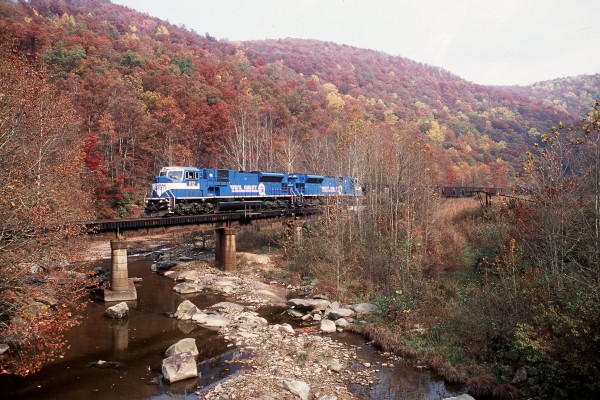
Two former Conrail SD80MACs lead an eastbound CSX coal train over Laurel Creek at the former mine site of Prestonia on the Cowen Subdivision, deep in the heart of West Virginia on October 21, 2000.

On a bright October morning in 2000, a former Conrail SD70MAC leads an eastbound CSX coal train over Laurel Creek at Centralia, West Virginia.
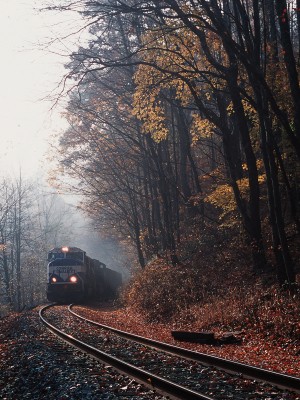
On foggy October morning, a former Conrail SD70MAC leads an eastbound CSX coal train on the Cowen Subdivision near Arcola, West Virginia.
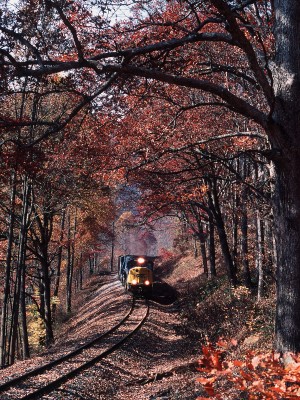
On a late October afternoon, a CSX SD70MAC leads an empty coal train for the Evergreen Mine near the end of the Cowen Subdivision in central West Virginia.
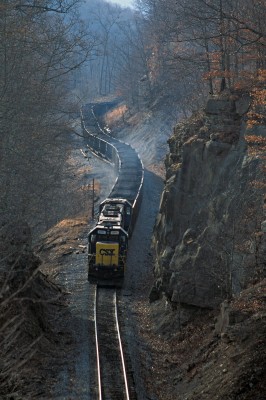
On CSX's remote Cowen Subdivision in March 2001, two SD60s lead a unit coal train upgrade near Frenchton, West Virginia, and through a large rock cut before entering French Hill Tunnel, the vantage for this view.
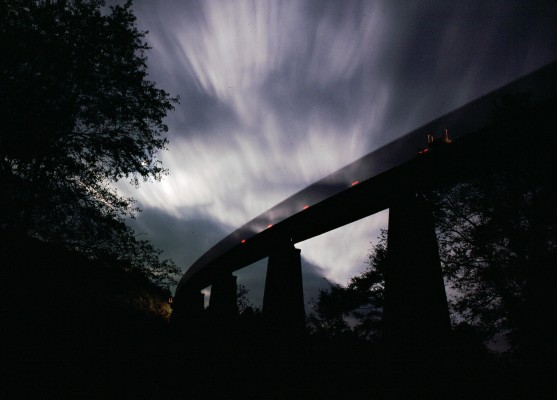
Clouds sweep through a moonlit night as an empty coal train crosses Pleasant Creek trestle on CSX's Cowen Subdivision, seven miles south of Grafton, West Virginia.

On a bright winter day in 2004, a westbound CSX empty coal train threads West Virginia's New River Gorge, seen from the former mining site of Kaymoor.
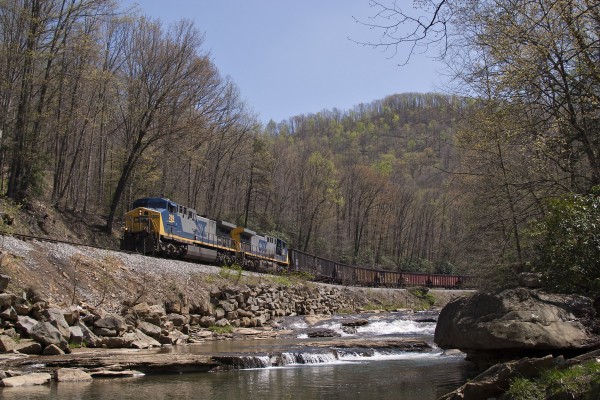
An eastbound loaded coal train on CSX's Cowen Subdivision runs along Laurel Creek just north of Erbacon, West Virginia, on a clear spring day in 2004.
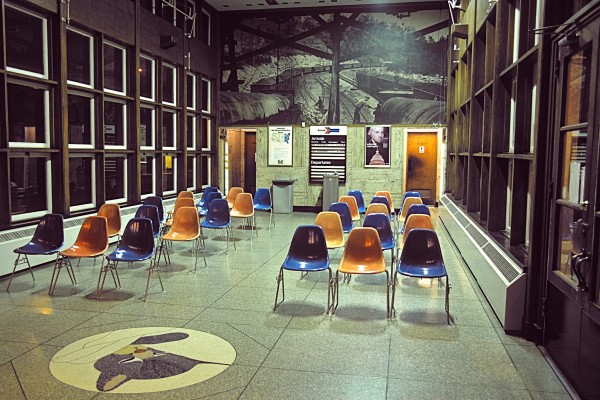
All is quiet in Amtrak's former Chesapeake & Ohio depot in Prince, West Virginia, an hour before the arrival of the westbound Cardinal on an April night in 2004.
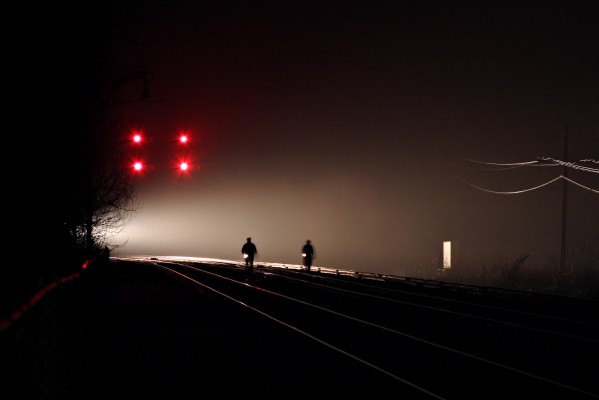
Two crew members from Amtrak's westbound "Cardinal," train no. 51, walk the train through malfunctioning absolute signals on CSX's New River Subdivision at Prince, West Virginia, illumiated by their train's headlight on the foggy night of April 30, 2004.
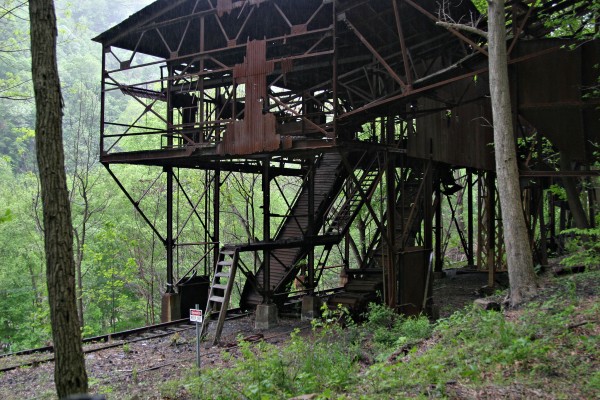
The rusting coal tipple at Nuttalburg, West Virginia, deep in the New River Gorge.
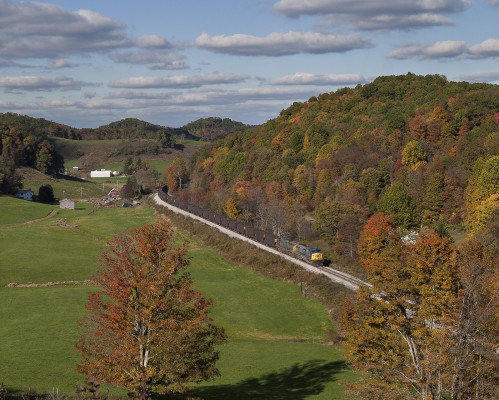
CSX empty coal train passing a farm in the mountains near Adrian, West Virginia, on a bright October afternoon in 2004.
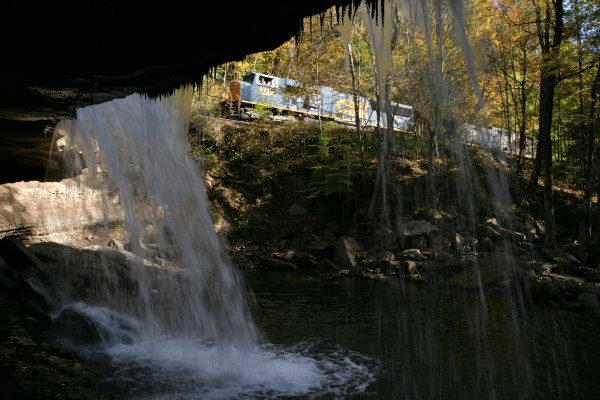
CSX locomotives pass a waterfall on Meadow Creek, near the community of Meadow Creek, West Virginia, in the New River Gorge. The locomotives just delivered the first half of a coal train to the main line junction and are returning to Rainelle for the second half.
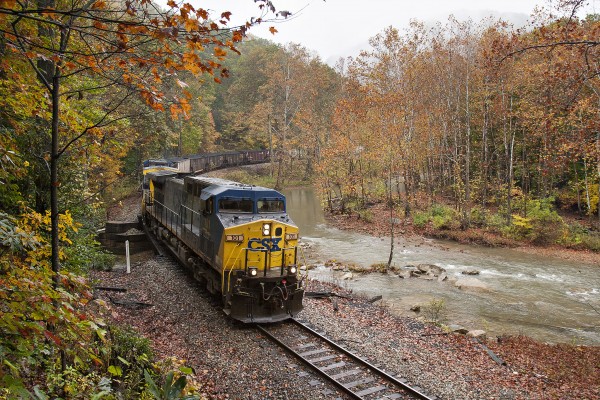
CSX eastbound unit coal train running along Laurel Creek near Centralia, West Virginia, on the remote Cowen Subdivision.
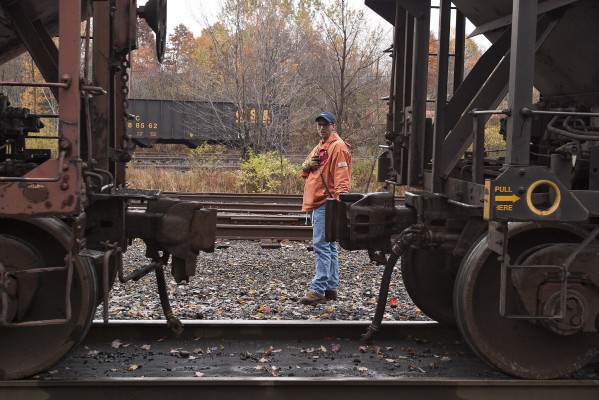
CSX conductor Jeff Conrad puts his coal train together in Cowen, West Virginia, on a dreary fall morning in 2004.
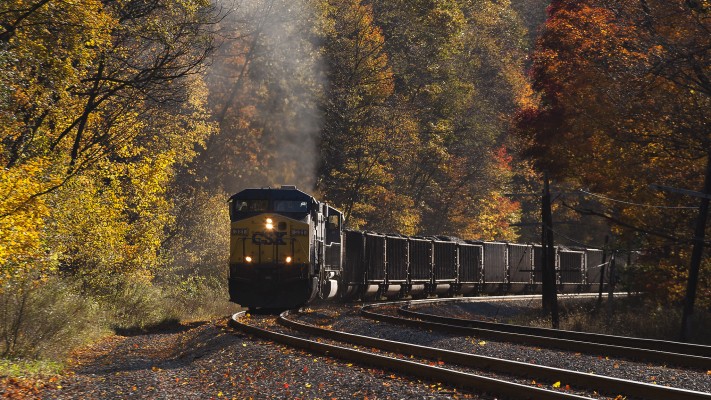
Two CSX diesel locomotives lug an eighty-car coal train up Cranberry Grade near Terra Alta, West Virginia, on the railroad's aptly-named Mountain Subdivision.
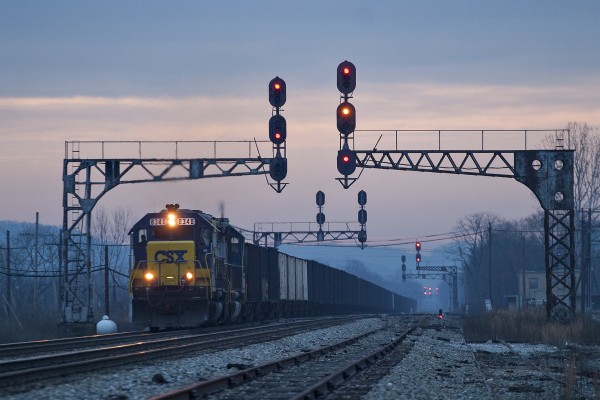
CSX westbound empty coal train passing under the former Chesapeake & Ohio signals in St. Albans, West Virginia, at dawn on the day after Christmas, 2004.
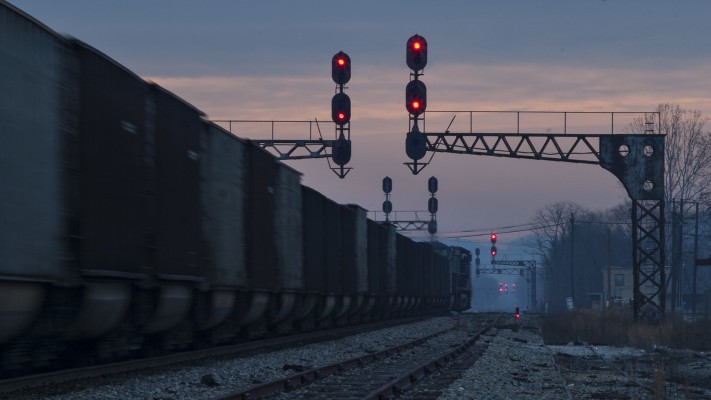
At dawn on the day after Christmas, 2004, an eastbound CSX empty coal train leaves the main line in St. Albans, West Virginia, taking the west leg of wye for the Coal River Subdivision.
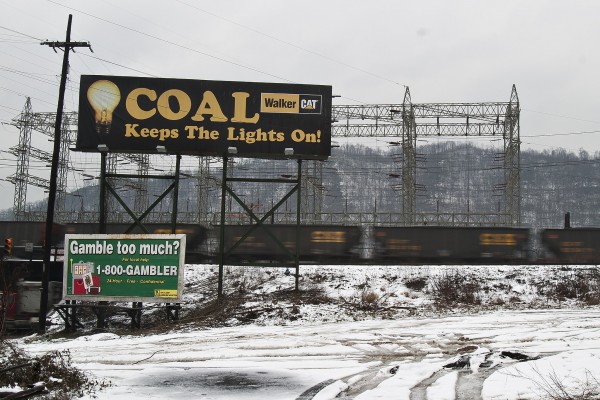
A Walker Cat billboard proclaims the electricity-generating capabilities of coal as a CSX coal train passes behind it on a dreary winter day in Cabin Creek, West Virginia.
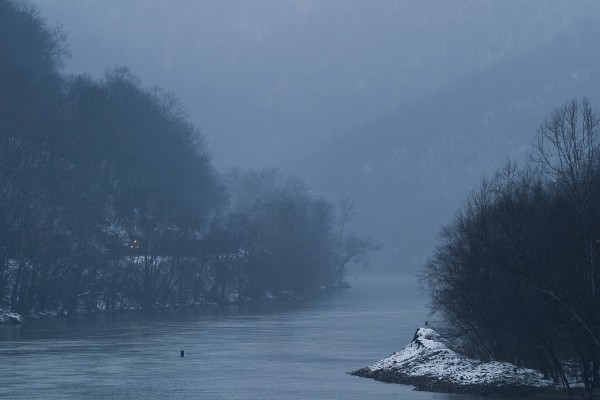
On a dark winter day in 2005, a CSX eastbound coal train rolls along the Kanawha River near Handley, West Virginia.
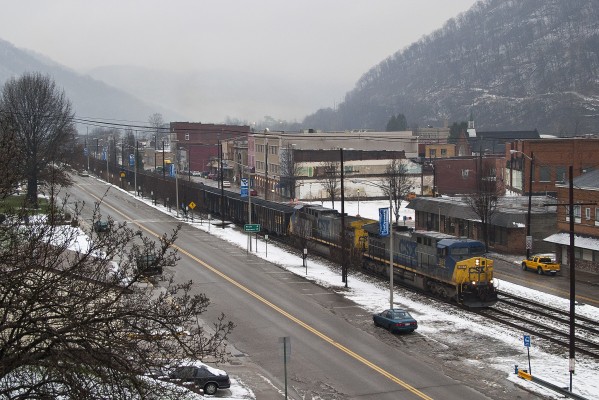
On a gray winter day in 2005, an eastbound CSX coal train threads the college town of Montgomery, West Virginia.
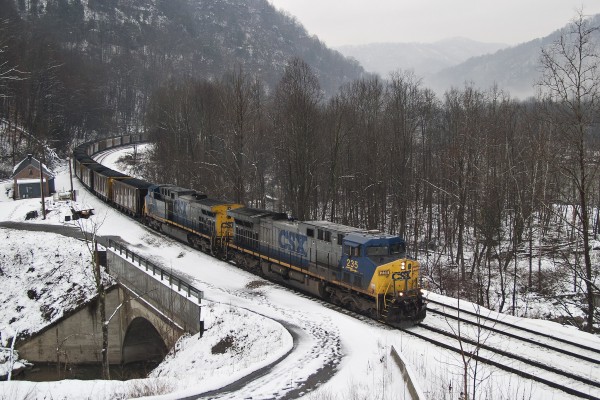
CSX eastbound coal train at Cotton Hill, West Virginia.
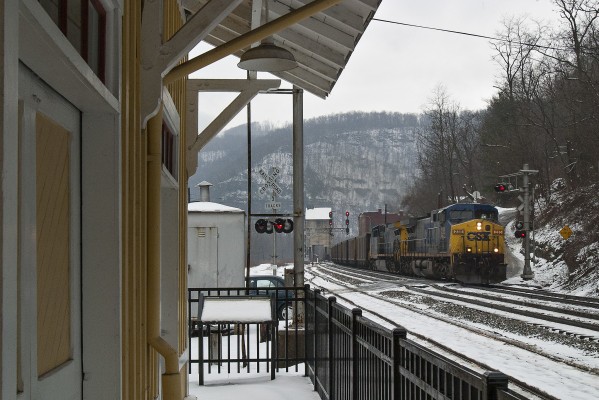
CSX eastbound coal train passing the depot Thurmond, West Virginia, on a dark winter day in the New River Gorge.
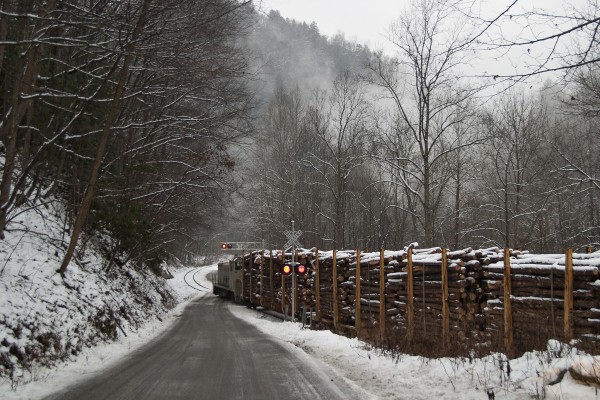
West Virginia Southern's only locomotive struggles to move three loaded log cars up Loop Creek near Thurmond, West Virginia, on a dreary winter day in 2005.
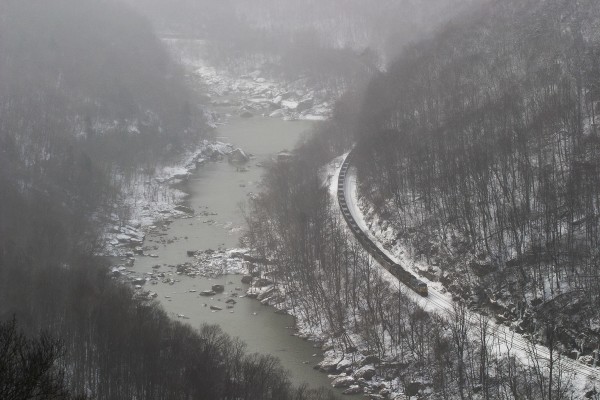
CSX westbound empty coal train in the western end of the New River Gorge near Gauley Bridge, West Virginia, as light snow falls in 2005.
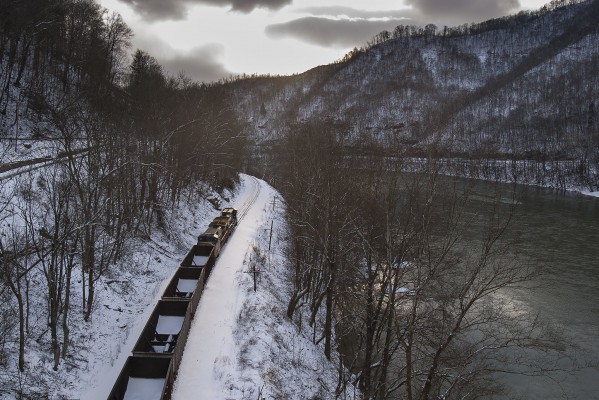
Silvery winter sunlight penetrates the clouds at Kanawha Falls, West Virginia, as a CSX empty coal train heads west down the Kanawha River.
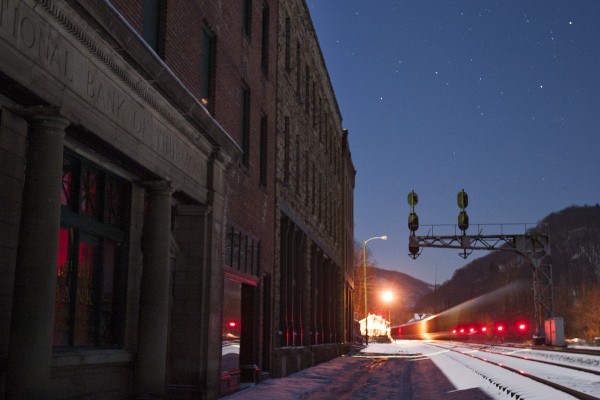
An eastbound CSX coal train hustles through Thurmond, West Virginia, on a clear winter night in 2005.
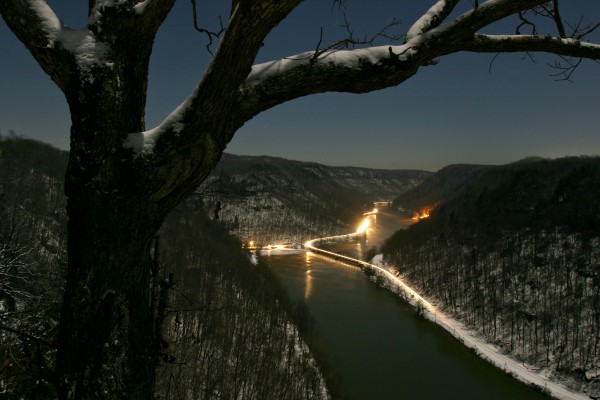
Running several hours late, Amtrak's westbound "Cardinal," train no. 51, streaks across the New River at Hawks Nest, West Virginia, on a moonlit winter night in 2005.
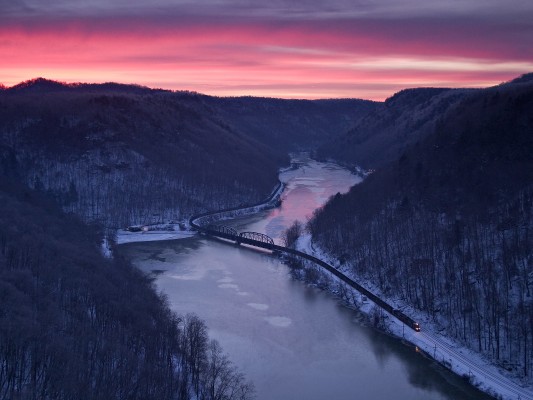
At the peak of a winter sunrise, a CSX westbound empty coal train crosses the icy New River at Hawks Nest, West Virginia.
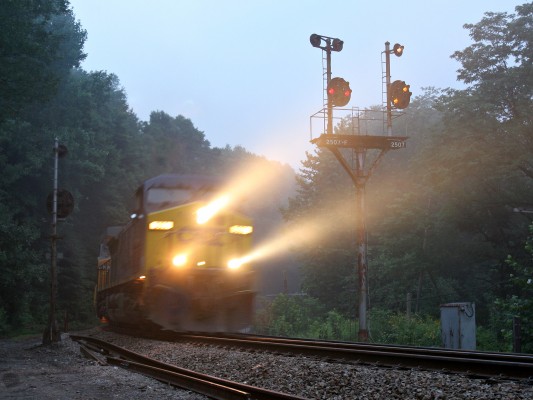
CSX eastbound coal train cuts through a foggy summer morning at Amblersburg, West Virginia, passing the color position light signals installed by predecessor Baltimore & Ohio. The eighty-car train, with two more locomotives pushing on the rear, is starting the climb up Cranberry Grade on the aptly-named Mountain Subdivision.
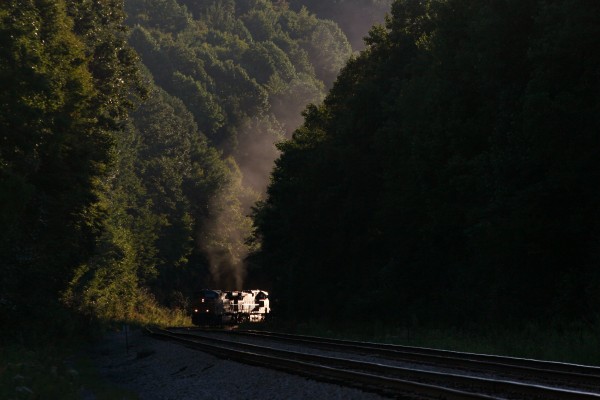
The setting sun provides a spotlight for an eastbound CSX loaded coal train climbing Newburg Grade at Tunnelton, West Virginia.

Three SD50s lead a westbound Appalachian & Ohio Railroad empty coal train over Pleasant Creek trestle, seven miles south of Grafton, West Virginia, on a foggy September morning in 2005.
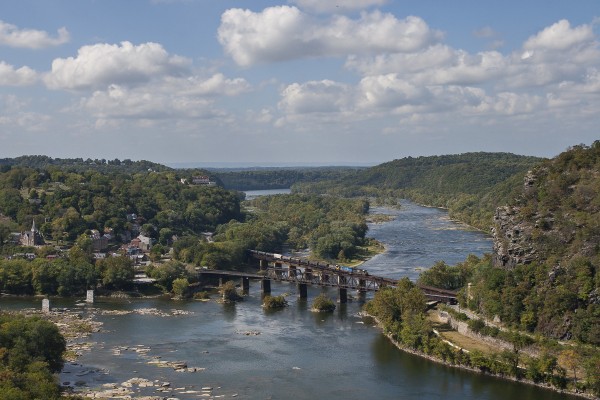
CSX eastbound mixed freight train crossing the Potomac River at Harpers Ferry, West Virginia.
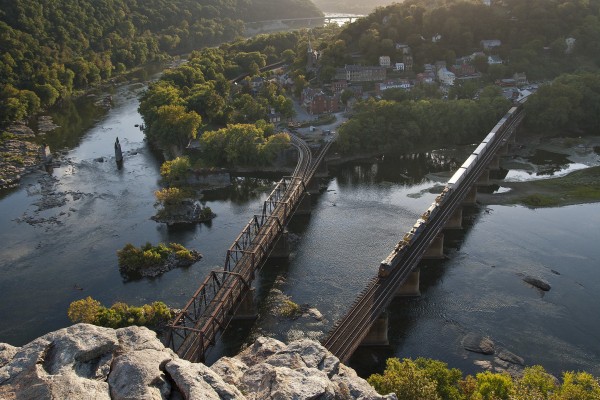
CSX eastbound mixed freight train crossing the Potomac River at Harpers Ferry, West Virginia, as seen from Maryland Heights just before sunset in October 2007.
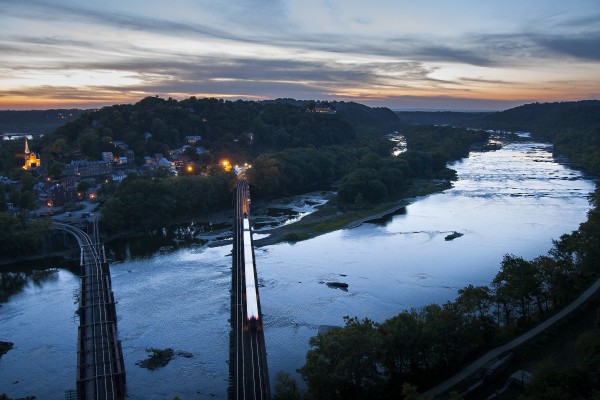
Westbound MARC commuter train crossing the Potomac River into West Virginia at Harpers Ferry just after sunset on an October day in 2007.
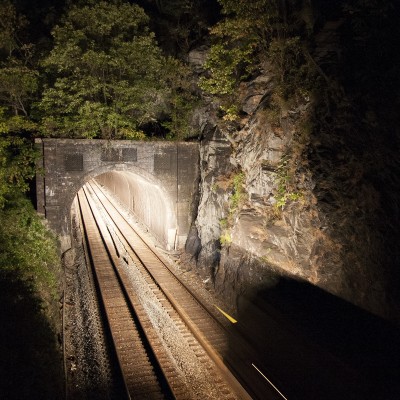
CSX westbound train approaching the tunnel at Maryland Heights, prior to crossing the Potomac River into West Virginia.
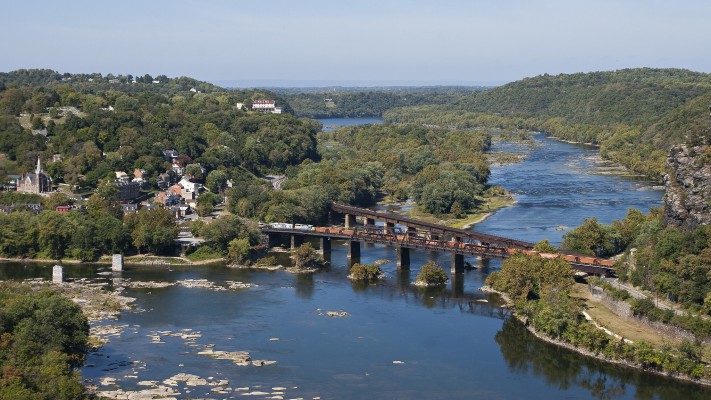
CSX's westbound "Rock Runner" crossing the Potomac River at Harpers Ferry, West Virginia, on a bright October day.
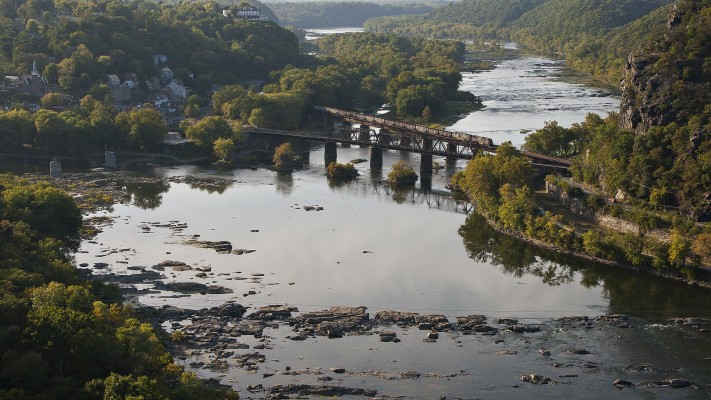
CSX eastbound loaded coal train crossing the Potomac River at Harpers Ferry, West Virginia.

CSX eastbound mixed freight train crossing the Potomac River between Maryland and West Virginia on the Magnolia Cutoff.
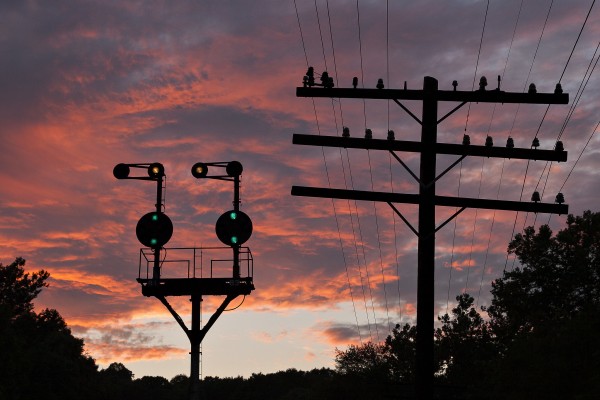
Baltimore & Ohio position light signals glow green against a pink sunset as Amtrak's westbound "Capital Limited" approaches on the Magnolia Cutoff near Paw Paw, West Virginia.
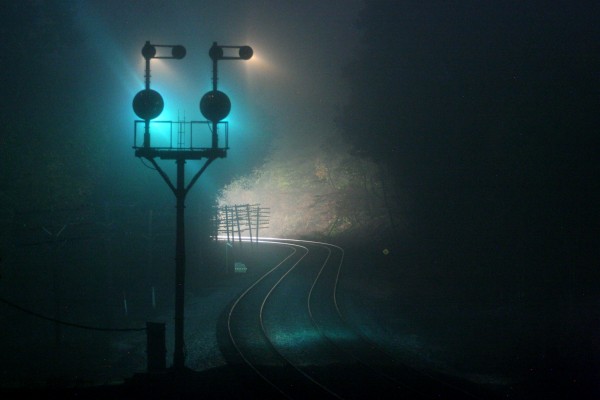
Former Baltimore & Ohio position light signals glow green through the fog as a westbound CSX freight train approaches Carothers Tunnel on the Magnolia Cutoff near Paw Paw, West Virginia.
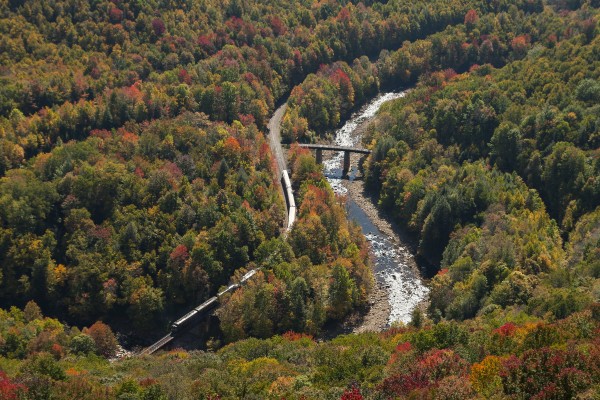
West Virginia Central passenger train crossing the Shavers Fork of the Cheat River at Cheat Junction, West Virginia, on the former Western Maryland Railway.
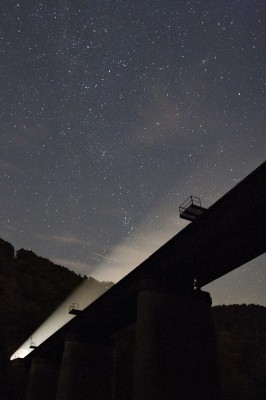
On a starry night along the West Virginia-Maryland border, a CSX freight train shines its headlights out of a tunnel and across a bridge over the Potomac River on the Magnolia Cutoff.
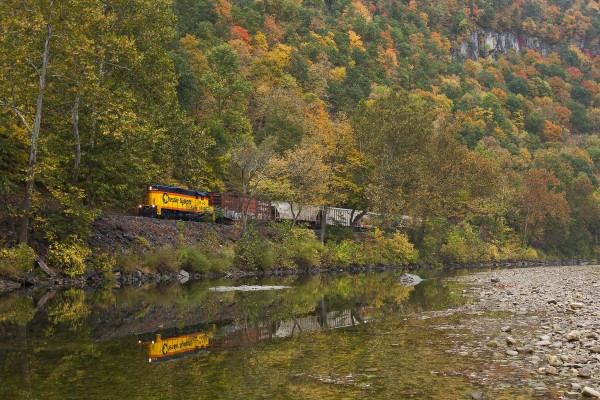
The South Branch Valley's Chessie-painted GP9, no. 6240, leads a short train northward along the railroad's namesake river shortly after departing Petersburg, West Virginia. The water level is low due to drought conditions that persisted from mid-August to mid-October.
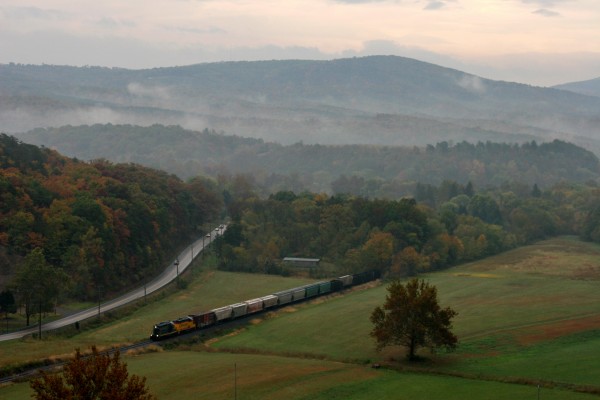
South Branch Valley northbound freight train between Romney and Green Spring, West Virginia, on a misty fall day in 2007.
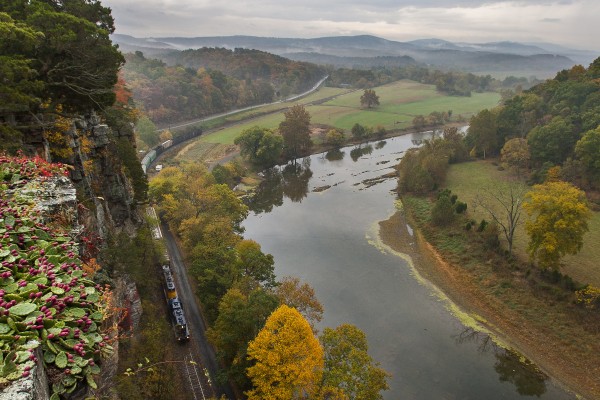
South Branch Valley northbound freight train running along its namesake river at Wapocomo between Romney and Green Spring, West Virginia, on a misty fall day in 2007.
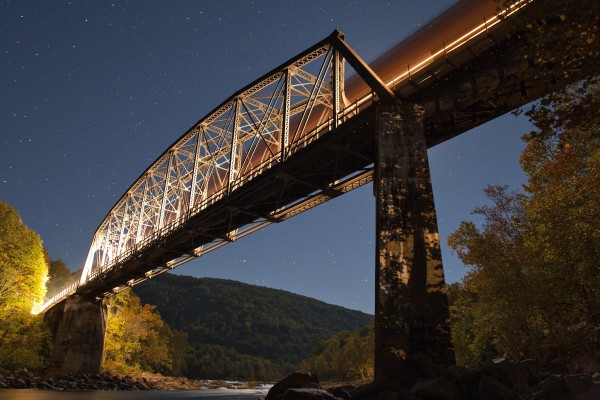
CSX eastbound coal train crossing the New River at remote Sewell, West Virginia, on a moonlit autumn night in 2007.
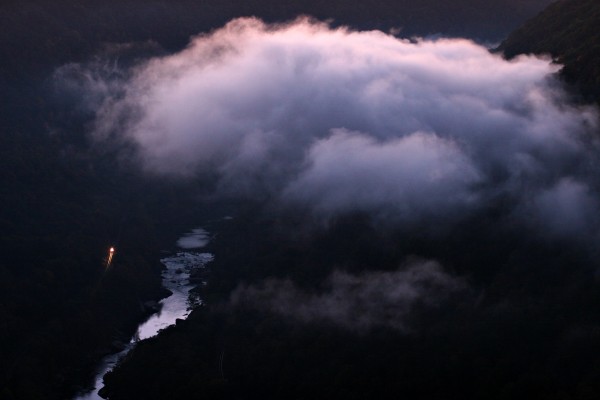
Clouds of fog follow the New River downstream as a CSX empty hopper train rolls west through the predawn darkness near Nuttallburg, West Virginia. The view is from a long cliff at the top of the New River Gorge known to rock climbers as the "Endless Wall."
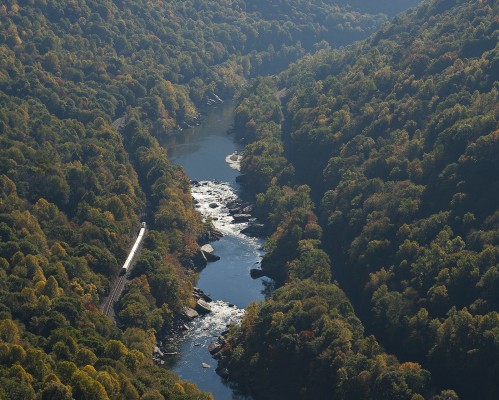
Amtrak's eastbound "Cardinal," train no. 50, heads up the New River near Nuttallburg, West Virginia, on a bright October morning in 2007.
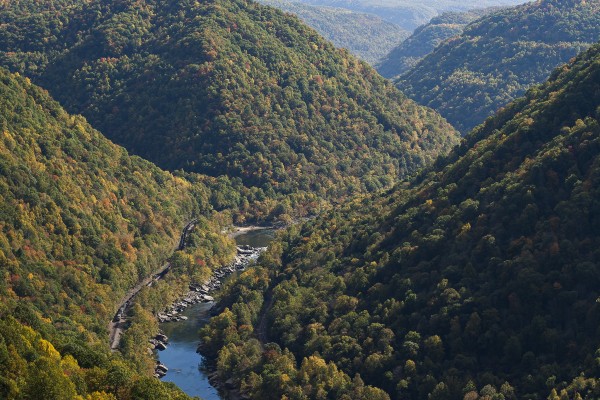
CSX westbound empty coal train with 150 cars rolls through the New River Gorge near Nuttallburg, West Virginia, on a clear October day in 2007.
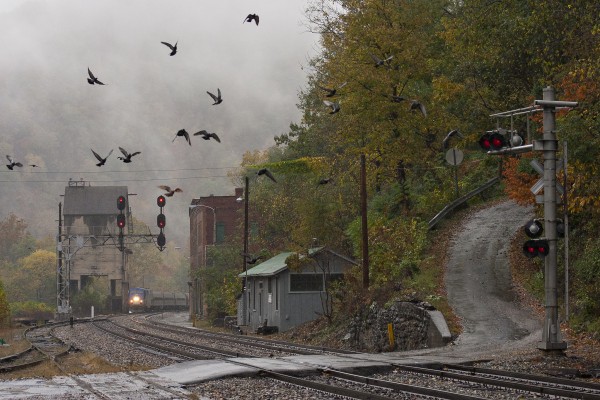
Pigeons scatter as Amtrak's eastbound "Cardinal," train no. 50, approaches Thurmond, West Virginia, deep in the New River Gorge. The train is making a flag stop to pickup a single passenger.
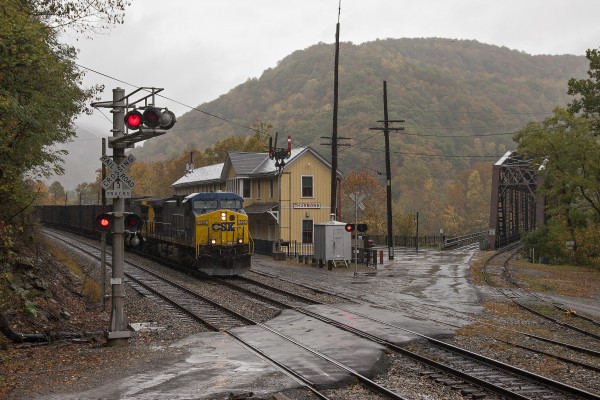
CSX westbound empty hopper train passing the former Chesapeake & Ohio depot at Thurmond, West Virginia, on a wet October day in 2007.
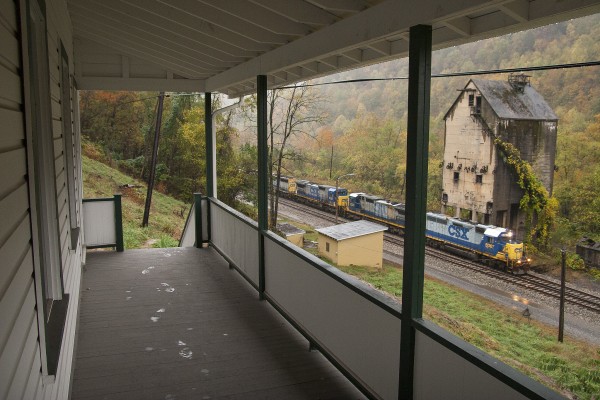
CSX westbound empty grain train passing the former Chesapeake & Ohio coaling tower in Thurmond, West Virginia, as seen from the steps of the town's boarding house.
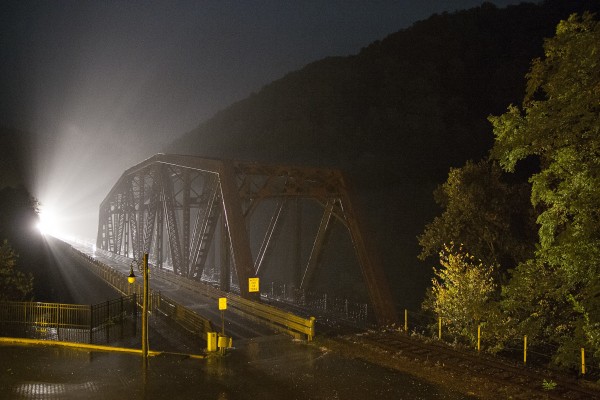
Headlights of a CSX local freight train shine across the New River at Thurmond, West Virginia, on a wet night in October 2007.
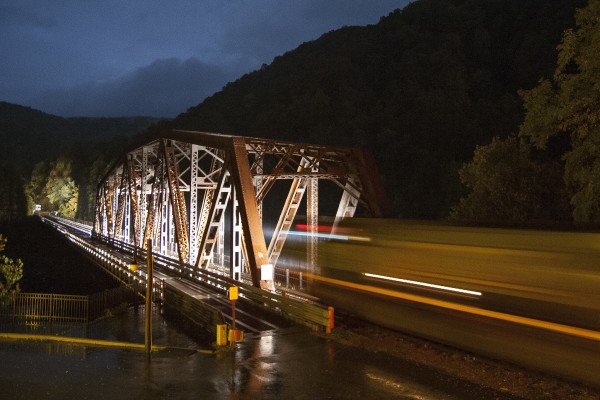
CSX empty coal train crossing the New River at Thurmond, West Virginia, late in an October evening.
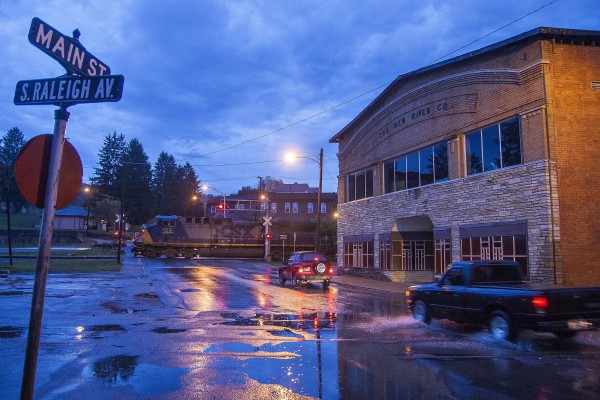
CSX loaded coal train passing the New River Company Store building in Mount Hope, West Virginia, at dawn of a wet October day in 2007.
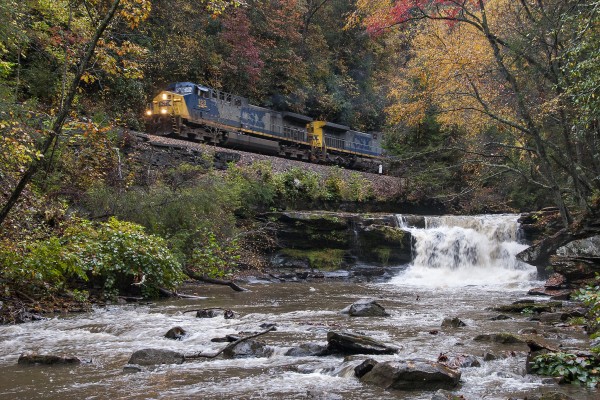
CSX loaded coal train passing a waterfall on Dunloup Creek near Thurmond, West Virginia.
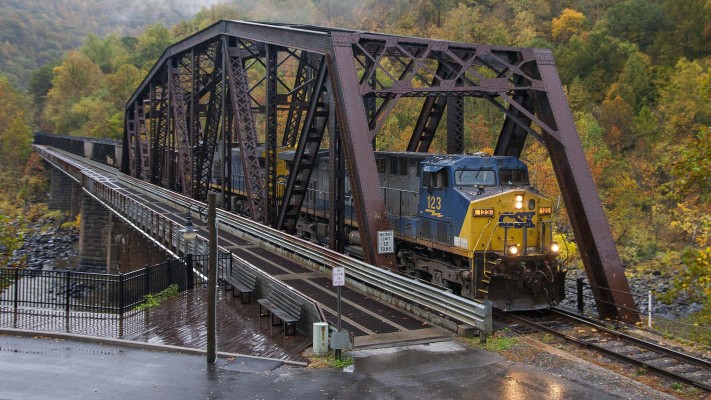
CSX loaded coal train crossing the New River at Thurmond, West Virginia.
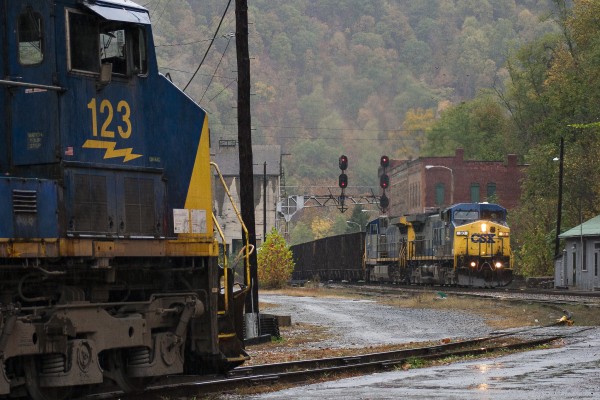
CSX coal trains meet in Thurmond, West Virginia, on a wet October morning in 2007.
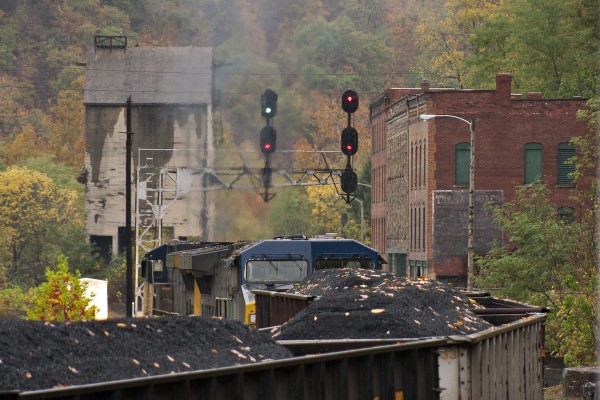
Fall autumn leaves lay atop coal in a CSX train at Thurmond, West Virginia, in October 2007.
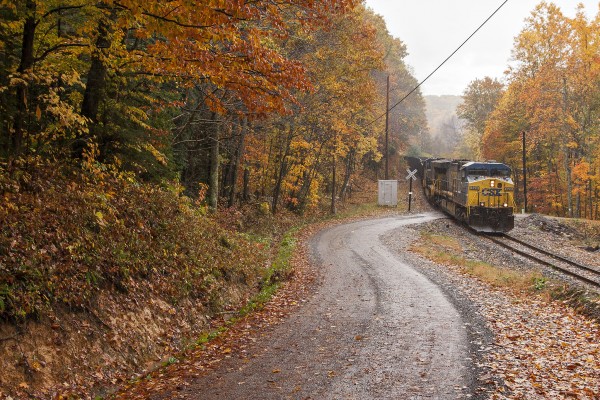
CSX's Green Valley Shifter taking empty hoppers to a mine on the former Nicholas, Fayette & Greenbrier Railroad on a peak fall day in central West Virginia near the town of Bellburn.
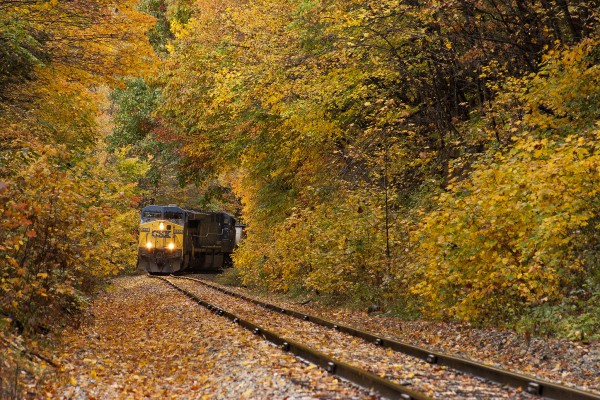
Fallen leaves litter the tracks near Green Valley, West Virginia, as a CSX mine shifter struggles up the three percent grade on the former Nicholas, Fayette & Greenbrier.
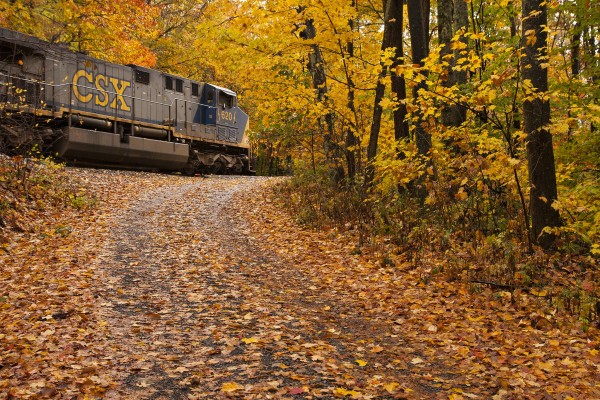
CSX AC6000 locomotive leading a mine shifter at Green Valley, West Virginia, on a peak fall day on the former Nicholas, Fayette & Greenbrier.
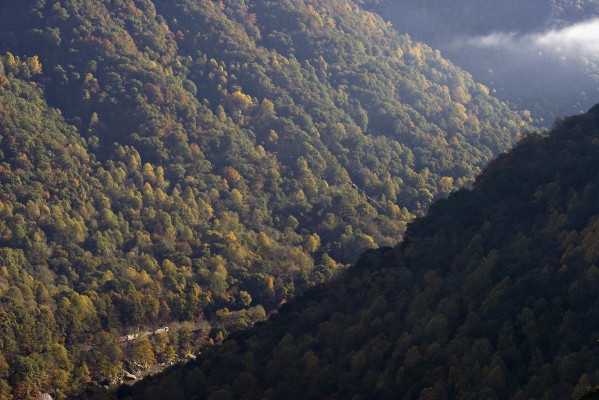
CSX eastbound grain train threading the New River Gorge near Kaymoor, West Virginia, on a sunny fall morning in 2007.
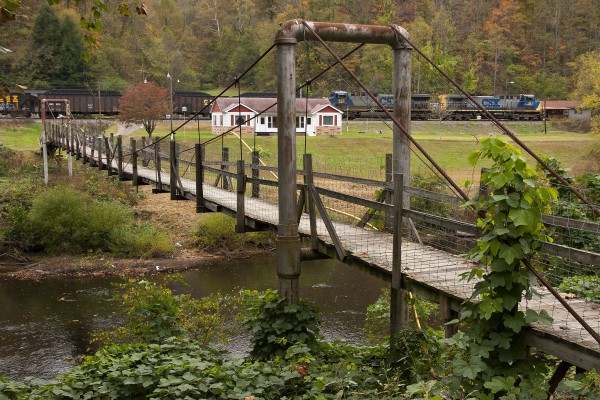
A CSX unit coal train passes a suspension bridge on the Big Coal Subdivision in southern West Virginia. The bridge provides the only access to residents living across the river.
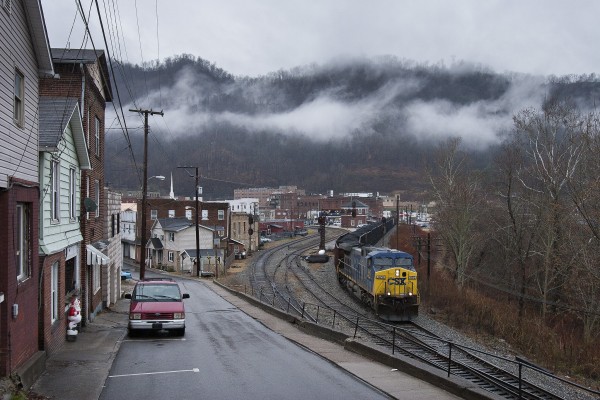
CSX mine shifter arriving in Logan, West Virginia, a week before Christmas in 2008.
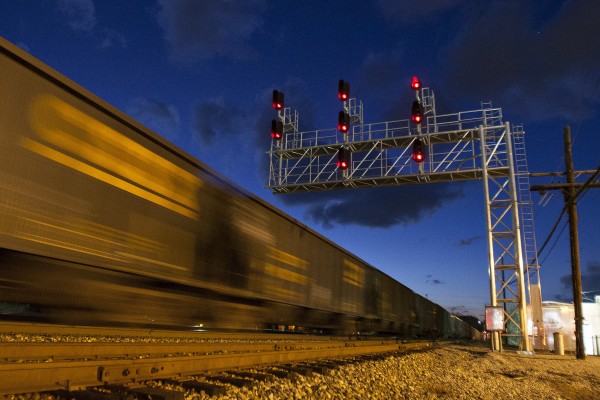
Westbound CSX loaded coal train passing under a new signal bridge in St. Albans, West Virginia, at dusk on a December day in 2008.
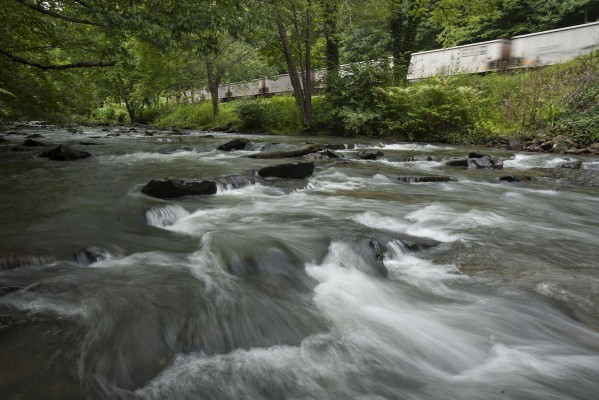
CSX loaded coal train rolling along the Loop Creek near Mount Hope, West Virginia.
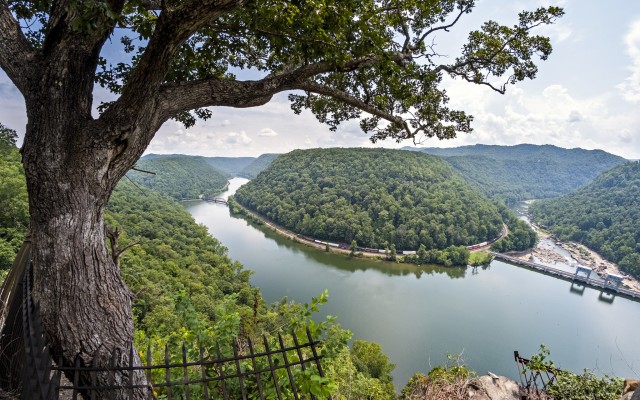
An oak tree at West Virginia’s Hawks Nest overlook frames the gorge of the New River as CSX merchandise train H750 slogs eastward on a humid August afternoon. The single AC-traction locomotive on the headend is assisted by a second unit in the middle of the train. Together, they’re making maybe fifteen miles per hour on their twisting, upstream run on Main Track Two—part of this train’s daily trek from Russell, Kentucky, to Rocky Mount, North Carolina. Just ahead, Track One diverges to cross the river on a pair of Parker through trusses. Eight miles beyond, Track Two crosses the river on a single Parker truss to rejoin Track One at Sewell. Before this train finishes passing through the scene, a westward empty hopper train will ease across the bridge—a flurry of activity for a line that currently sees about a dozen trains a day.
For all the beauty it offers, Hawks Nest has a tragic history. The location takes its name from osprey that used to nest in the cliffs here. Blasting during railroad construction from 1869 to 1873 disturbed the birds and they never returned, although you can still see vultures catching thermals at eye level. Most of the New’s flow exits the gorge via a tunnel next to the dam at lower right, which runs three miles under Gauley Mountain to provide hydroelectric power for a metals plant at Alloy. Constructed in the late 1920s and early 1930s, the tunnel runs through nearly pure deposits of silica. Project managers demanded grueling hours and provided almost no safety equipment, and hundreds of the workers who dug the tunnel later died from silicosis.
Hawks Nest is a touchstone for me. As a frequent stop on family outings during my childhood, it is the place where the notion of the railroad in the landscape first enthralled me. In my early days as a photographer I visited frequently, making a few memorable images and more than a few memories. One of my favorite visits was a summer morning in 2007 with my grandfather, when there were no trains to disturb our conversation. As I learned more of the history of Hawks Nest, it has become a place to try to reconcile conflicting feelings over technology and its price. Even as life has taken me far from Hawks Nest, it remains a powerful memory, a thought that never fails to elicit strong emotions.
This visit was a bonus, a detour and a brief stop on the way to meet part of my wife’s family, and my first time here in more than a decade. We stayed for less than half an hour, and you could easily wait hours here without seeing any trains. Somehow we saw two. (Although it's hard for me to think of an eastward merchandise train as anything other than Q302...) Even in the high backlight of a summer afternoon, all of the magic was still there. For me, I suspect it always will be.